CERN,

Scientists applaud during the switch on operation of the Large Hadron Collider.
1 of 2
![]()
The Large Hadron Collider -- a $9 billion particle accelerator designed to simulate conditions of the Big Bang that created the physical Universe -- was switched on at 0732 GMT to cheers and applause from experts gathered to witness the event.
While observers were left nonplussed by the anticlimactic flashing dots on a TV screen that signalled the machine's successful test run, among teams of scientists involved around the world there were jubilant celebrations and popping champagne corks.
In the coming months, the collider is expected to begin smashing particles into each other by sending two beams of protons around the tunnel in opposite directions.
Skeptics, who claim that the experiment could lead to the creation of a black hole capable of swallowing the planet, failed in a legal bid to halt the project at CERN, the European Organization for Nuclear Research.
Others have branded it a colossal waste of cash, draining resources from its multinational collaborators that could have been spent on scientific research with more tangible benefits to mankind.
Sound off: What do you think of the experiment?
French President Nicolas Sarkozy hailed the project as a major achievement for
"The repercussions of this scientific investment without precedent in the history of humanity will be essential not only for the intimate knowledge of our universe, but also for the direct applications in fields as varied as intensive calculation or even medicine," he said. ![]()
The collider will operate at higher energies and intensities in the next year, potentially generating enough data to make a discovery by 2009, experts say.
Don't Miss
They say the experiment has the potential to confirm theories that physicists have been working on for decades including the possible existence of extra dimensions. They also hope to find a theoretical particle called the Higgs boson -- sometimes referred to as the "God particle," which has never been detected, but would help explain why matter has mass.
The collider will recreate the conditions of less than a millionth of a second after the Big Bang, when there was a hot "soup" of tiny particles called quarks and gluons, to look at how the universe evolved, said John Harris,
Since this is exploratory science, the collider may uncover surprises that contradict prevailing theories, but which are just as interesting, said Joseph Lykken, theoretical physicist at the Fermi National Accelerator Laboratory.
"When
Don't Miss
- Blog: Countdown to confusion
- Atom-collider is a YouTube smash
- Blog: Flip it baby
- TIME.com: Collider triggers end-of-world fears
- Colliding with nature's best-kept secrets
Why should the layperson care about this particular exploration? Years ago, when electrons were first identified, no one knew what they were good for, but they have since transformed our entire economy, said Howard Gordon, deputy research program manager for the collider's ATLAS experiment.
"The transformative effect of this research will be to understand the world we live in much better," said Gordon, at Brookhaven National Laboratory. "It's important for just who we are, what we are."
Fears have emerged that the collider could produce black holes that could suck up anything around them -- including the whole Earth. Such fears prompted legal actions in the
Although physicists acknowledge that the collider could, in theory, create small black holes, they say they do not pose any risk. A study released Friday by CERN scientists explains that any black hole created would be tiny, and would not have enough energy to stick around very long before dissolving. Five collider collaborators who did not pen the report independently told CNN there would be no danger from potential black holes.
![]()
John Huth, who works on the collider's ATLAS experiment, called such fears "baloney" in a recent interview, and noted that in normal physics, even if the black hole were stable, it could just pass through the Earth without being detected or without interacting at all.
"The gravitational force is so weak that you'd have to wait many, many, many, many, many lifetimes of the universe before one of these things could [get] big enough to even get close to being a problem," said Huth, professor of physics at Harvard University.
Cern atom smasher set in motion
By Frances Williams in
Published: September 10 2008 07:32 | Last updated: September 10 2008 16:57
The world’s most powerful atom smasher was set in motion for the first time on Wednesday, marking the launch of a 20-year experiment designed to unlock the secrets of the universe.
Thunderous applause greeted the first complete circuit of a beam of protons – hydrogen nuclei – at close to the speed of light around a 27km tunnel built deep under
 “It’s a fantastic moment,” said Lyn Evans, leader of the $8bn (€5.7bn, £4.5bn) project who has been involved from its beginnings a quarter-century ago. “We can now look forward to a new era of understanding about the origins and evolution of the universe.”
“It’s a fantastic moment,” said Lyn Evans, leader of the $8bn (€5.7bn, £4.5bn) project who has been involved from its beginnings a quarter-century ago. “We can now look forward to a new era of understanding about the origins and evolution of the universe.”
Among the early goals of scientists at the European Organisation for Nuclear Research, known by its French acronym Cern, are an explanation of the mechanism that generates mass, and investigation of the mysterious “dark matter” that makes up a quarter of the universe. After some “small electrical problems” overnight, the start-up of the Large Hadron Collider went without a hitch, as the beam was propelled around the circuit by giant superconducting magnets cooled to a temperature colder than outer space. A few hours later a beam was sent in the opposite direction.
The packed control room erupted in cheers and whistles as two glowing balls of light briefly appeared on the crucial monitoring screen, signalling the successful circuit of the first beam.
Over the next few weeks, Cern’s scientists and engineers will make the final adjustments needed to collide two opposing beams, each finer than a human hair. By smashing the proton beams together, they plan to recreate at sub-atomic level the intense energies a millionth of a second after the “Big Bang” that gave birth to our universe 14bn years ago.
Cathedral-sized detectors have been built to capture the traces of any new elements of matter that emerge from those collisions, putting existing theories to the test and perhaps revealing new forces or hidden dimensions of space and time.
EDITOR’S CHOICE
Slideshow: Cern’s Large Hadron Collider goes live - Sep-10
Editorial Comment: Collision course - Sep-10
Scientists look to the spin-offs of a miniature ‘big bang’ - Sep-04
“The LHC is a discovery machine. We don’t know what we’ll find,” says Abraham Seiden, professor of physics and director of the Santa Cruz Institute for Particle Physics at the
The
Cern said new scientific results could start to appear in a year’s time. The LHC’s first task will be to find the Higgs Boson, a particle first postulated more than 40 years ago by Peter Higgs, a British physicist, as giving mass to matter. Prof Higgs said earlier this year he was hoping to receive confirmation of his theory by the time he turns 80 in May 2009.
Another candidate that the LHC could potentially put in the running for a Nobel Physics Prize, alongside Prof Higgs, is Stephen Hawking of
A safety review published late last week was the latest to give the LHC a clean bill of health, noting that the collisions would merely mimic, at lower energies, collisions that occur naturally when the earth is bombarded by high-energy cosmic rays.
“Nature has already conducted the equivalent of about a hundred thousand LHC experimental programmes on earth – and the planet still exists,” the report said.
Robert Aymar, Cern director general, said: “The LHC is safe, and any suggestion that it might present a risk is pure fiction.”
| | |||||||||||||||||
| |
|
| |||||||||||||||
| |||||||||||||||||
![]() Enlarge By Martial Trezzini, Keystone via AP
Enlarge By Martial Trezzini, Keystone via AP
![]()
Scientists launched an "
Largest particle collider conducts successful test
![]()
GENEVA (AP) — The world's largest particle collider passed its first major test by firing a beam of protons around a 17-mile underground ring Wednesday in what scientists hope is the next great step to understanding the makeup of the universe.
After a series of trial runs, two white dots flashed on a computer screen at 10:26 a.m. indicating that the protons had traveled the full length of the $3.8 billion Large Hadron Collider — described as the biggest physics experiment in history.
"There it is," project leader Lyn Evans said when the beam completed its lap.
MORE: Questions and answers about the particle collider
Champagne corks popped in labs as far away as
FIND MORE STORIES IN: United States | Britain | Earth | Chicago | Champagne | Stephen Hawking | Large Hadron Collider | Organization for Nuclear Research | Swiss-French | Higgs | James Gillies | Lyn Evans
"Well done, everybody," said Robert Aymar, director-general of the European Organization for Nuclear Research, to cheers from the assembled scientists in the collider's control room at the Swiss-French border.
The organization, known by its French acronym CERN, began firing the protons — a type of subatomic particle — around the tunnel in stages less than an hour earlier, with the first beam injection at 9:35 a.m.
Now that the beam has been successfully tested in a clockwise direction, CERN plans to send it counterclockwise. Eventually two beams will be fired in opposite directions with the aim of recreating conditions a split second after the big bang, which scientists theorize was the massive explosion that created the universe.
"My first thought was relief," said Evans, who has been working on the project since its inception in 1984. "This is a machine of enormous complexity. Things can go wrong at any time. But this morning has been a great start."
He didn't want to set a date, but said that he expected scientists would be able to conduct collisions for their experiments "within a few months."
The collider is designed to push the proton beam close to the speed of light, whizzing 11,000 times a second around the tunnel.
Scientists hope to eventually send two beams of protons through two tubes about the width of fire hoses, speeding through a vacuum that is colder and emptier than outer space. The paths of these beams will cross, and a few protons will collide. The collider's two largest detectors — essentially huge digital cameras weighing thousands of tons — are capable of taking millions of snapshots a second.
The CERN experiments could reveal more about "dark matter," antimatter and possibly hidden dimensions of space and time. It could also find evidence of the hypothetical particle — the Higgs boson — which is sometimes called the "God particle" because it is believed to give mass to all other particles, and thus to matter that makes up the universe.
The supercooled magnets that guide the proton beam heated slightly in the morning's testing, leading to a pause to recool them before trying the opposite direction.
The start of the collider came over the objections of some who feared the collision of protons could eventually imperil the Earth by creating micro-black holes, subatomic versions of collapsed stars whose gravity is so strong they can suck in planets and other stars.
"It's nonsense," said James Gillies, chief spokesman for CERN.
CERN was backed by leading scientists like
Gillies told the AP that the most dangerous thing that could happen would be if a beam at full power were to go out of control, and that would only damage the accelerator itself and burrow into the rock around the tunnel.
Nothing of the sort occurred Wednesday, though the accelerator is still probably a year away from full power.
The project organized by the 20 European member nations of CERN has attracted researchers from 80 nations. Some 1,200 are from the
Some scientists have been waiting for 20 years to use the LHC.
The complexity of manufacturing it required groundbreaking advances in the use of supercooled, superconducting equipment. The 2001 start and 2005 completion dates were pushed back by two years each, and the cost of the construction was 25% higher than originally budgeted in 1996, Luciano Maiani, who was CERN director-general at the time, told The Associated Press.
Maiani and the other three living former directors-general attended the launch Wednesday.
Smaller colliders have been used for decades to study the makeup of the atom. Less than 100 years ago scientists thought protons and neutrons were the smallest components of an atom's nucleus, but in stages since then experiments have shown they were made of still smaller quarks and gluons and that there were other forces and particles.
Copyright 2008 The Associated Press. All rights reserved. This material may not be published, broadcast, rewritten or redistributed.
Scientists Activate Particle Collider

Pool photo by Fabrice Coffrini
Scientists at the control center of the Large Hadron Collider outside
Published: September 10, 2008
Multimedia
Cameras for Capturing Primordial Fire
Related
The End Is Nigh, They Say, but It’s a Prophecy With a Long and Unfulfilled History (September 10, 2008)
RSS Feed
Readers' Comments
Share your thoughts on this article.
After 14 years of labor, scientists at the CERN laboratory outside Geneva successfully activated the Large Hadron Collider, the world’s largest, most powerful particle collider and, at $8 billion, the most expensive scientific experiment to date.
At 4:28 a.m., Eastern time, scientists sent the beam of protons around the collider’s 17-mile-long racetrack, 300 feet underneath the Swiss-French border, and then sent another beam through again.
“It’s a fantastic moment,” said Lyn Evans, who has been the project director of the collider since its inception. “We can now look forward to a new era of understanding about the origins and evolution of the universe.”
Eventually, the collider is expected to accelerate protons to energies of 7 trillion electron volts and then smash them together, recreating conditions in the primordial fireball only a trillionth of a second after the Big Bang. Scientists hope the machine will be a sort of Hubble Space Telescope of inner space, allowing them to detect new subatomic particles and forces of nature.
An ocean away from Geneva, the L.H.C.’s activation was watched with bittersweet excitement here at the Fermi National Accelerator Laboratory, or Fermilab, which until that moment had the reigning particle collider.
Some 400 students and onlookers, and three local mayors, gathered overnight to watch the dawn of a new generation in high-energy physics, applauding each milestone of the night as the beam was slowly wrestled into shape at CERN, the European Organization for Nuclear Research.
Many of them, including the lab’s director, Pier Oddone, were wearing pajamas or bathrobes or even night caps bearing Fermilab "Pajama Party" patches on them.
Outside, a half moon was hanging low in a cloudy sky as a reminder that the universe is beautiful and mysterious and that another small step into that mystery was about to be taken.
Dr. Oddone lauded the new machine as the result of “two and a half decades of dreams to open up this huge new territory in the exploration of the natural world.”
Roger Aymar, CERN’s director, called the new collider a “discovery machine.” The buzz was worldwide. Gordon Kane, of the University of Michigan called the new collider “a why machine,” in a posting on the blog “Cosmic Variance.”
Others, worried about speculation that a black hole could emerge from the proton collisions, have called it a doomsday machine, to the dismay of CERN physicists who can point to a variety of studies and reports that say that this fear is nothing but science fiction.
But Boaz Klima, a Fermilab particle physicist, said that the speculation had nevertheless helped create buzz and excitement about particle physics. “Bad publicity is still publicity,” he said. “This is something that people can talk to their neighbors about.”
The only thing physicists agree on is that they don’t know what will happen — what laws prevail — when the collisions reach the energies just after the Big Bang.
“That there are many theories means we don’t have a clue,” said Dr. Oddone. “That’s what makes it so exciting.”
Many physicists hope to materialize a hypothetical particle called the Higgs boson, which according to theory endows other particles with mass. They also hope to identify the nature of the mysterious invisible dark matter that makes up 25 percent of the universe and provides the scaffolding for galaxies. Some dream of revealing new dimensions of space-time.
But those discoveries are in the future. If the new collider is a car, then what physicists did today was turn on an engine, that will now sit and warm up for a couple of months before anybody drives it anywhere. The first meaningful collisions, at an energy of 5 trillion electron volts, will not happen until late fall.
Nevertheless, the symbolism of the moment was not lost on the experts and non-experts gathered here.
At 2 a.m. local time, Herman White, a physicist here, and master of ceremonies for the night, took the stage to announce the night’s schedule. For at least the next few hours, he said, “we are still the highest energy accelerator in the world,” to wild applause.
In an interview earlier that day, Dr. Oddone called it a “bittersweet moment.”
Once upon a time the United States ruled particle physics. For the last two decades, Fermilab’s Tevatron, which hurls protons and their mirror opposites, anti-protons, together at energies of a trillion electron volts was the world’s largest particle machine.
Scientists Activate Particle Collider
Published: September 10, 2008
(Page 2 of 2)
By the end of the year, when the CERN collider has revved up to 5 trillion electron volts, the Fermilab machine will be a distant second. Electron volts are the currency of choice in physics for both mass and energy. The more you have, the closer and hotter you can punch back in time towards the Big Bang.
Multimedia
Cameras for Capturing Primordial Fire
Related
The End Is Nigh, They Say, but It’s a Prophecy With a Long and Unfulfilled History (September 10, 2008)
RSS Feed
Readers' Comments
Share your thoughts on this article.
In 1993, the United States Congress canceled plans for an even bigger collider and more powerful machine, the Superconducting Supercollider, after its cost ballooned to $11 billion. That collider, its former director Roy Schwitters of the University of Texas in
Dr. Schwitters said that American particle physics — the search for the most fundamental rules and constituents of nature — had never really recovered from the loss of the supercollider. “One non-renewable resource is a person’s time and good years,” he said, adding that many young people have left the field for astrophysics or cosmology.
Dr. Oddone, Fermilab’s director, said the uncertainties of steady Congressional funding made the situation at Fermilab and physics in general in the United States “suspenseful.”
CERN, on the other hand, is an organization of 20 countires, whose budget is determined by treaty and thus stable. The year after the supercollider was killed, CERN decided to go ahead with its own collider.
Fermilab and the United States, which eventually contributed $531 million for the collider, have not exactly been shut out. Dr. Oddone said that Americans constitute about a quarter of the scientists who have built the four giant detectors that sit at points around the racetrack to collect and analyze the debris from the primordial fireballs.
In fact, a remote conrol room for monitoring one of those experiments, known poetically as the Compact Muon Solenoid, was built at Fermilab, just off the lobby of the main building here.
“The mood is great at this place,” he said, noting that the Tevatron is humming productively and accumulating data at a much more rapid pace than the CERN collider will initially produce. There is even still a chance that Tevatron could find the sacred Higgs boson before the new hadron collider, which is bound to have a slow start.
Another target of physicists is a principle called supersymmetry, which predicts, among other things, that there is a vast population of new particle species left over from the Big Bang and waiting to be discovered, one of which could be the long-sought dark matter.
“It would be a very rich life if supersymmetry is found,” Dr. Oddone said. “It would amount to permanent employment for physicists for decades.”
“The truly surprising thing is if we don’t see anything.”
By the time festivities started, at 2 a.m. Chicago time, outside and inside the control room for the solenoid detector, Fermilab had been festooned with balloons and the accelerator was already half an hour late. The superconducting magnets that guide the protons around on their path have to be cooled to 1.9 degrees Kelvin, about 3.5 degrees Fahrenheit above absolute zero, and one of the eight sectors of the underground ring was too warm, so they had to wait to cool it back down.
Then Lyn Evans, the collider project director, outlined the plan for the evening: sending a bunch of protons clockwise farther and farther around the collider until they made it all the way. He confessed to not knowing how long it would take, noting that for a previous CERN accelerator it had taken 12 hours. “I hope this will go much faster,” he said.
Twenty minutes later, when the displays in the control room showed that the beam had made it to its first stopping point, the crowd applauded. Twenty minutes after that, the physicists erupted in cheers when their consoles showed that the muon solenoid had detected collisions between the beam and stray gas molecules in the otherwise vacuum beam pipe. Their detector was alive and working.
Finally at 3:27
At Fermilab, they broke out the champagne. Dr. Oddone congratulated his European colleagues. “We have all worked together and brought this machine to life,” he said. “We’re so excited about sending a beam around. Wait until we start having collisions and doing physics.”
Scientists cheer as protons complete first circuit of Large Hadron Collider
Analysis: what it all means | Welsh engineer leads the way | 30 days when the world didn't end
The biggest and most expensive civilian experiment in the history of science is finally underway.
At 9.28am UK time, the control room at the CERN laboratory erupted into cheers and applause as a pair of dots on a computer screen showed that a beam of particles had successfully completed its first lap of the Large Hadron Collider (LHC), the £3.6 billion “Big Bang machine” that will open a new window on the Universe.
It took less than an hour to guide the stream of particles around its inaugural circuit: the first protons had been fired into the 27km ring at 8.32am.
Related Links
Multimedia
“Thank you, thank you everyone,” said Lyn Evans, project leader of the LHC, as the beam finished its first lap.
Almost an hour earlier, scientists endured an anxious 48-second wait between the generation of the first pulse of protons, and a tiny flash of light on a screen that showed the beam had made it around the first 3km of the ring.
The LHC team then steered the beam of protons around the entire circuit, stopping it at points along the way to correct their aim. By 8.55am, the beam was half way around, passing through the first four of the atom-smasher’s eight sectors.
“Wow!” Dr Evans exclaimed, as it emerged that the beam had completed its first half-lap just 26 minutes after the insertion process began.
“The beam is now half way around the LHC, and it’s been through two experiments, ALICE and CMS. CMS has seen some beautiful tracks. We’ve now stopped the beam and we’re making some corrections, and then we’ll move around octant by octant. We’ve got four more to do. At the rate we’re going, within an hour we’ll have the beam all around the LHC.”
Beam-stoppers, or absorbing blocks, were being used to prevent the beam from passing too far along the narrow vacuum tube, which has the diameter of a 50p piece, before scientists think they have pointed it correctly. These were being progressively removed, until protons could circulate.
Once the LHC’s clockwise beam had been inserted, scientists moved on to the anti-clockwise beam in the afternoon. Shortly after 2pm, the second stream of particles was also making its way around the collider.
The next challenge is to “capture” both beams, so they fire in neat 2mm pulses, and to fine-tune them. Then the LHC will move on to collide the two, to recreate the conditions of the Big Bang. There will be no collisions today, but it is possible that some trial collisions will be performed as early as next week, to help scientists to calibrate their detectors.
Lyn Evans, the LHC project leader, started the process at 9.15 with the words: “Let’s get started, everybody.”
He said: “We have a beam already at the entrance to the LHC, and in a few minutes we’ll remove the absorber block the beam is hitting, and start taking it around octant-by-octant. We’ll then make any adjustments we need.”
The first beam process took 12 hours when the LHC’s predecessor, the Large Electron-Positron Collider, was switched on. Dr Evans said: “How long it’ll take I don’t know. I hope the LHC will be much faster.” It turned out to be much, much faster, taking just 56 minutes.
Robert Aymar, director of Cern, said the day brought a “mixture of pleasure and hope,” in an address to the control room staff immediately before the switch-on.
“Today is a big day for Cern and the LHC. Everything is ready for us to succeed. Bravo everyone, and good luck. It will go well, I’m sure. Thanks to everyone.”
There were some last-minute nerves as an electrical storm on Monday evening caused a loss of power to some of the cooling systems that keep the LHC’s superconducting magnets chilled to -271C. These had been restored by late last night, allowing the “first beam” day to begin on schedule.
By next month, the LHC should be running at more than 10 times the energy used today, though it will not reach its maximum energy of 14 teraelectronvolts until next year. The first experiments that could discover new physics, as opposed to showing the detectors are working, could start in the late autumn.
The first scientific discoveries could well concern supersymmetry, the theory that all particles have twins known as "sparticles". The search for the Higgs boson -- the so-called "God particle" that is believed to give matter its mass -- will take longer, with no results expected until late next year or the year after.
Large Hadron Collider
8:10 AM CDT, September 10, 2008
The Large Hadron Collider, which is the world's largest particle collider, successfully passed its first test by firing a beam of protons around a 17-mile (27-kilometer) underground ring Wednesday in what scientists hope is the next great step to understanding the makeup of the universe.
After a series of trial runs, two white dots flashed on a computer screen at 10:26 a.m. (0826 GMT) indicating that the protons had traveled the full length of the 4 billion Swiss franc (US$3.8 billion) Large Hadron Collider — described as the biggest physics experiment in history.
"There it is," project leader Lyn Evans said when the beam completed its lap.
Champagne corks popped in labs as far away as Chicago, where contributing and competing scientists watched the proceedings by satellite. Physicists around the world now have much greater power to smash the components of atoms together in attempts to learn about their structure.
Related links
· Why the Earth could end when the new collider fires up
· Fermilab scientists prep for unveiling of European particle collider
"Well done, everybody," said Robert Aymar, director-general of the European Organization for Nuclear Research, to cheers from the assembled scientists in the collider's control room at the Swiss-French border.
The organization, known by its French acronym CERN, began firing the protons — a type of subatomic particle — around the tunnel in stages less than an hour earlier, with the first beam injection at 9:35 a.m. (0735 GMT).
Now that the beam has been successfully tested in a clockwise direction, CERN plans to send it counterclockwise. Eventually two beams will be fired in opposite directions with the aim of recreating conditions a split second after the big bang, which scientists theorize was the massive explosion that created the universe.
"My first thought was relief," said Evans, who has been working on the project since its inception in 1984. "This is a machine of enormous complexity. Things can go wrong at any time. But this morning has been a great start."
He didn't want to set a date, but said that he expected scientists would be able to conduct collisions for their experiments "within a few months."
The collider is designed to push the proton beam close to the speed of light, whizzing 11,000 times a second around the tunnel.
Scientists hope to eventually send two beams of protons through two tubes about the width of fire hoses, speeding through a vacuum that is colder and emptier than outer space. The paths of these beams will cross, and a few protons will collide. The collider's two largest detectors — essentially huge digital cameras weighing thousands of tons — are capable of taking millions of snapshots a second.
The CERN experiments could reveal more about "dark matter," antimatter and possibly hidden dimensions of space and time. It could also find evidence of the hypothetical particle — the Higgs boson — which is sometimes called the "God particle" because it is believed to give mass to all other particles, and thus to matter that makes up the universe.
The supercooled magnets that guide the proton beam heated slightly in the morning's testing, leading to a pause to recool them before trying the opposite direction.
The start of the collider came over the objections of some who feared the collision of protons could eventually imperil the Earth by creating micro-black holes, subatomic versions of collapsed stars whose gravity is so strong they can suck in planets and other stars.
"It's nonsense," said James Gillies, chief spokesman for CERN.
CERN was backed by leading scientists like Britain's Stephen Hawking , who declared the experiments to be absolutely safe.
Gillies told the AP that the most dangerous thing that could happen would be if a beam at full power were to go out of control, and that would only damage the accelerator itself and burrow into the rock around the tunnel.
Nothing of the sort occurred Wednesday, though the accelerator is still probably a year away from full power.
The project organized by the 20 European member nations of CERN has attracted researchers from 80 nations. Some 1,200 are from the United States, an observer country that contributed US$531 million. Japan, another observer, also is a major contributor.
Some scientists have been waiting for 20 years to use the LHC.
The complexity of manufacturing it required groundbreaking advances in the use of supercooled, superconducting equipment. The 2001 start and 2005 completion dates were pushed back by two years each, and the cost of the construction was 25 percent higher than originally budgeted in 1996, Luciano Maiani, who was CERN director-general at the time, told The Associated Press.
Maiani and the other three living former directors-general attended the launch Wednesday.
Smaller colliders have been used for decades to study the makeup of the atom. Less than 100 years ago scientists thought protons and neutrons were the smallest components of an atom's nucleus, but in stages since then experiments have shown they were made of still smaller quarks and gluons and that there were other forces and particles.
___
On the Net:
CERN: http://www.cern.ch
The U.S. at the LHC: http://www.uslhc.us/
Large Hadron Rap http://www.youtube.com/watch?vf6aU-wFSqt0
Massive particle collider passes first key tests
From the Associated Press | 6:55 AM PDT
The world's largest particle collider passed its first major tests by firing two beams of protons in opposite directions around a 17-mile (27-kilometer) underground ring today in what scientists hope is the next great step to understanding the makeup of the universe.
CERN,

Scientists applaud during the switch on operation of the Large Hadron Collider.
1 of 2
![]()
The Large Hadron Collider -- a $9 billion particle accelerator designed to simulate conditions of the Big Bang that created the physical Universe -- was switched on at 0732 GMT to cheers and applause from experts gathered to witness the event.
While observers were left nonplussed by the anticlimactic flashing dots on a TV screen that signalled the machine's successful test run, among teams of scientists involved around the world there were jubilant celebrations and popping champagne corks.
In the coming months, the collider is expected to begin smashing particles into each other by sending two beams of protons around the tunnel in opposite directions.
Skeptics, who claim that the experiment could lead to the creation of a black hole capable of swallowing the planet, failed in a legal bid to halt the project at CERN, the European Organization for Nuclear Research.
Others have branded it a colossal waste of cash, draining resources from its multinational collaborators that could have been spent on scientific research with more tangible benefits to mankind.
Sound off: What do you think of the experiment?
French President Nicolas Sarkozy hailed the project as a major achievement for
"The repercussions of this scientific investment without precedent in the history of humanity will be essential not only for the intimate knowledge of our universe, but also for the direct applications in fields as varied as intensive calculation or even medicine," he said. ![]()
The collider will operate at higher energies and intensities in the next year, potentially generating enough data to make a discovery by 2009, experts say.
Don't Miss
They say the experiment has the potential to confirm theories that physicists have been working on for decades including the possible existence of extra dimensions. They also hope to find a theoretical particle called the Higgs boson -- sometimes referred to as the "God particle," which has never been detected, but would help explain why matter has mass.
The collider will recreate the conditions of less than a millionth of a second after the Big Bang, when there was a hot "soup" of tiny particles called quarks and gluons, to look at how the universe evolved, said John Harris,
Since this is exploratory science, the collider may uncover surprises that contradict prevailing theories, but which are just as interesting, said Joseph Lykken, theoretical physicist at the Fermi National Accelerator Laboratory.
"When
Don't Miss
- Blog: Countdown to confusion
- Atom-collider is a YouTube smash
- Blog: Flip it baby
- TIME.com: Collider triggers end-of-world fears
- Colliding with nature's best-kept secrets
Why should the layperson care about this particular exploration? Years ago, when electrons were first identified, no one knew what they were good for, but they have since transformed our entire economy, said Howard Gordon, deputy research program manager for the collider's ATLAS experiment.
"The transformative effect of this research will be to understand the world we live in much better," said Gordon, at Brookhaven National Laboratory. "It's important for just who we are, what we are."
Fears have emerged that the collider could produce black holes that could suck up anything around them -- including the whole Earth. Such fears prompted legal actions in the
Although physicists acknowledge that the collider could, in theory, create small black holes, they say they do not pose any risk. A study released Friday by CERN scientists explains that any black hole created would be tiny, and would not have enough energy to stick around very long before dissolving. Five collider collaborators who did not pen the report independently told CNN there would be no danger from potential black holes.
![]()
John Huth, who works on the collider's ATLAS experiment, called such fears "baloney" in a recent interview, and noted that in normal physics, even if the black hole were stable, it could just pass through the Earth without being detected or without interacting at all.
"The gravitational force is so weak that you'd have to wait many, many, many, many, many lifetimes of the universe before one of these things could [get] big enough to even get close to being a problem," said Huth, professor of physics at Harvard University.
Cern atom smasher set in motion
By Frances Williams in
Published: September 10 2008 07:32 | Last updated: September 10 2008 16:57
The world’s most powerful atom smasher was set in motion for the first time on Wednesday, marking the launch of a 20-year experiment designed to unlock the secrets of the universe.
Thunderous applause greeted the first complete circuit of a beam of protons – hydrogen nuclei – at close to the speed of light around a 27km tunnel built deep under
 “It’s a fantastic moment,” said Lyn Evans, leader of the $8bn (€5.7bn, £4.5bn) project who has been involved from its beginnings a quarter-century ago. “We can now look forward to a new era of understanding about the origins and evolution of the universe.”
“It’s a fantastic moment,” said Lyn Evans, leader of the $8bn (€5.7bn, £4.5bn) project who has been involved from its beginnings a quarter-century ago. “We can now look forward to a new era of understanding about the origins and evolution of the universe.”
Among the early goals of scientists at the European Organisation for Nuclear Research, known by its French acronym Cern, are an explanation of the mechanism that generates mass, and investigation of the mysterious “dark matter” that makes up a quarter of the universe. After some “small electrical problems” overnight, the start-up of the Large Hadron Collider went without a hitch, as the beam was propelled around the circuit by giant superconducting magnets cooled to a temperature colder than outer space. A few hours later a beam was sent in the opposite direction.
The packed control room erupted in cheers and whistles as two glowing balls of light briefly appeared on the crucial monitoring screen, signalling the successful circuit of the first beam.
Over the next few weeks, Cern’s scientists and engineers will make the final adjustments needed to collide two opposing beams, each finer than a human hair. By smashing the proton beams together, they plan to recreate at sub-atomic level the intense energies a millionth of a second after the “Big Bang” that gave birth to our universe 14bn years ago.
Cathedral-sized detectors have been built to capture the traces of any new elements of matter that emerge from those collisions, putting existing theories to the test and perhaps revealing new forces or hidden dimensions of space and time.
EDITOR’S CHOICE
Slideshow: Cern’s Large Hadron Collider goes live - Sep-10
Editorial Comment: Collision course - Sep-10
Scientists look to the spin-offs of a miniature ‘big bang’ - Sep-04
“The LHC is a discovery machine. We don’t know what we’ll find,” says Abraham Seiden, professor of physics and director of the Santa Cruz Institute for Particle Physics at the
The
Cern said new scientific results could start to appear in a year’s time. The LHC’s first task will be to find the Higgs Boson, a particle first postulated more than 40 years ago by Peter Higgs, a British physicist, as giving mass to matter. Prof Higgs said earlier this year he was hoping to receive confirmation of his theory by the time he turns 80 in May 2009.
Another candidate that the LHC could potentially put in the running for a Nobel Physics Prize, alongside Prof Higgs, is Stephen Hawking of
A safety review published late last week was the latest to give the LHC a clean bill of health, noting that the collisions would merely mimic, at lower energies, collisions that occur naturally when the earth is bombarded by high-energy cosmic rays.
“Nature has already conducted the equivalent of about a hundred thousand LHC experimental programmes on earth – and the planet still exists,” the report said.
Robert Aymar, Cern director general, said: “The LHC is safe, and any suggestion that it might present a risk is pure fiction.”
| | |||||||||||||||||
| |
|
| |||||||||||||||
| |||||||||||||||||
![]() Enlarge By Martial Trezzini, Keystone via AP
Enlarge By Martial Trezzini, Keystone via AP
![]()
Scientists launched an "
Largest particle collider conducts successful test
![]()
GENEVA (AP) — The world's largest particle collider passed its first major test by firing a beam of protons around a 17-mile underground ring Wednesday in what scientists hope is the next great step to understanding the makeup of the universe.
After a series of trial runs, two white dots flashed on a computer screen at 10:26 a.m. indicating that the protons had traveled the full length of the $3.8 billion Large Hadron Collider — described as the biggest physics experiment in history.
"There it is," project leader Lyn Evans said when the beam completed its lap.
MORE: Questions and answers about the particle collider
Champagne corks popped in labs as far away as
FIND MORE STORIES IN: United States | Britain | Earth | Chicago | Champagne | Stephen Hawking | Large Hadron Collider | Organization for Nuclear Research | Swiss-French | Higgs | James Gillies | Lyn Evans
"Well done, everybody," said Robert Aymar, director-general of the European Organization for Nuclear Research, to cheers from the assembled scientists in the collider's control room at the Swiss-French border.
The organization, known by its French acronym CERN, began firing the protons — a type of subatomic particle — around the tunnel in stages less than an hour earlier, with the first beam injection at 9:35 a.m.
Now that the beam has been successfully tested in a clockwise direction, CERN plans to send it counterclockwise. Eventually two beams will be fired in opposite directions with the aim of recreating conditions a split second after the big bang, which scientists theorize was the massive explosion that created the universe.
"My first thought was relief," said Evans, who has been working on the project since its inception in 1984. "This is a machine of enormous complexity. Things can go wrong at any time. But this morning has been a great start."
He didn't want to set a date, but said that he expected scientists would be able to conduct collisions for their experiments "within a few months."
The collider is designed to push the proton beam close to the speed of light, whizzing 11,000 times a second around the tunnel.
Scientists hope to eventually send two beams of protons through two tubes about the width of fire hoses, speeding through a vacuum that is colder and emptier than outer space. The paths of these beams will cross, and a few protons will collide. The collider's two largest detectors — essentially huge digital cameras weighing thousands of tons — are capable of taking millions of snapshots a second.
The CERN experiments could reveal more about "dark matter," antimatter and possibly hidden dimensions of space and time. It could also find evidence of the hypothetical particle — the Higgs boson — which is sometimes called the "God particle" because it is believed to give mass to all other particles, and thus to matter that makes up the universe.
The supercooled magnets that guide the proton beam heated slightly in the morning's testing, leading to a pause to recool them before trying the opposite direction.
The start of the collider came over the objections of some who feared the collision of protons could eventually imperil the Earth by creating micro-black holes, subatomic versions of collapsed stars whose gravity is so strong they can suck in planets and other stars.
"It's nonsense," said James Gillies, chief spokesman for CERN.
CERN was backed by leading scientists like
Gillies told the AP that the most dangerous thing that could happen would be if a beam at full power were to go out of control, and that would only damage the accelerator itself and burrow into the rock around the tunnel.
Nothing of the sort occurred Wednesday, though the accelerator is still probably a year away from full power.
The project organized by the 20 European member nations of CERN has attracted researchers from 80 nations. Some 1,200 are from the
Some scientists have been waiting for 20 years to use the LHC.
The complexity of manufacturing it required groundbreaking advances in the use of supercooled, superconducting equipment. The 2001 start and 2005 completion dates were pushed back by two years each, and the cost of the construction was 25% higher than originally budgeted in 1996, Luciano Maiani, who was CERN director-general at the time, told The Associated Press.
Maiani and the other three living former directors-general attended the launch Wednesday.
Smaller colliders have been used for decades to study the makeup of the atom. Less than 100 years ago scientists thought protons and neutrons were the smallest components of an atom's nucleus, but in stages since then experiments have shown they were made of still smaller quarks and gluons and that there were other forces and particles.
Copyright 2008 The Associated Press. All rights reserved. This material may not be published, broadcast, rewritten or redistributed.
Scientists Activate Particle Collider

Pool photo by Fabrice Coffrini
Scientists at the control center of the Large Hadron Collider outside
Published: September 10, 2008
Multimedia
Cameras for Capturing Primordial Fire
Related
The End Is Nigh, They Say, but It’s a Prophecy With a Long and Unfulfilled History (September 10, 2008)
RSS Feed
Readers' Comments
Share your thoughts on this article.
After 14 years of labor, scientists at the CERN laboratory outside Geneva successfully activated the Large Hadron Collider, the world’s largest, most powerful particle collider and, at $8 billion, the most expensive scientific experiment to date.
At 4:28 a.m., Eastern time, scientists sent the beam of protons around the collider’s 17-mile-long racetrack, 300 feet underneath the Swiss-French border, and then sent another beam through again.
“It’s a fantastic moment,” said Lyn Evans, who has been the project director of the collider since its inception. “We can now look forward to a new era of understanding about the origins and evolution of the universe.”
Eventually, the collider is expected to accelerate protons to energies of 7 trillion electron volts and then smash them together, recreating conditions in the primordial fireball only a trillionth of a second after the Big Bang. Scientists hope the machine will be a sort of Hubble Space Telescope of inner space, allowing them to detect new subatomic particles and forces of nature.
An ocean away from Geneva, the L.H.C.’s activation was watched with bittersweet excitement here at the Fermi National Accelerator Laboratory, or Fermilab, which until that moment had the reigning particle collider.
Some 400 students and onlookers, and three local mayors, gathered overnight to watch the dawn of a new generation in high-energy physics, applauding each milestone of the night as the beam was slowly wrestled into shape at CERN, the European Organization for Nuclear Research.
Many of them, including the lab’s director, Pier Oddone, were wearing pajamas or bathrobes or even night caps bearing Fermilab "Pajama Party" patches on them.
Outside, a half moon was hanging low in a cloudy sky as a reminder that the universe is beautiful and mysterious and that another small step into that mystery was about to be taken.
Dr. Oddone lauded the new machine as the result of “two and a half decades of dreams to open up this huge new territory in the exploration of the natural world.”
Roger Aymar, CERN’s director, called the new collider a “discovery machine.” The buzz was worldwide. Gordon Kane, of the University of Michigan called the new collider “a why machine,” in a posting on the blog “Cosmic Variance.”
Others, worried about speculation that a black hole could emerge from the proton collisions, have called it a doomsday machine, to the dismay of CERN physicists who can point to a variety of studies and reports that say that this fear is nothing but science fiction.
But Boaz Klima, a Fermilab particle physicist, said that the speculation had nevertheless helped create buzz and excitement about particle physics. “Bad publicity is still publicity,” he said. “This is something that people can talk to their neighbors about.”
The only thing physicists agree on is that they don’t know what will happen — what laws prevail — when the collisions reach the energies just after the Big Bang.
“That there are many theories means we don’t have a clue,” said Dr. Oddone. “That’s what makes it so exciting.”
Many physicists hope to materialize a hypothetical particle called the Higgs boson, which according to theory endows other particles with mass. They also hope to identify the nature of the mysterious invisible dark matter that makes up 25 percent of the universe and provides the scaffolding for galaxies. Some dream of revealing new dimensions of space-time.
But those discoveries are in the future. If the new collider is a car, then what physicists did today was turn on an engine, that will now sit and warm up for a couple of months before anybody drives it anywhere. The first meaningful collisions, at an energy of 5 trillion electron volts, will not happen until late fall.
Nevertheless, the symbolism of the moment was not lost on the experts and non-experts gathered here.
At 2 a.m. local time, Herman White, a physicist here, and master of ceremonies for the night, took the stage to announce the night’s schedule. For at least the next few hours, he said, “we are still the highest energy accelerator in the world,” to wild applause.
In an interview earlier that day, Dr. Oddone called it a “bittersweet moment.”
Once upon a time the United States ruled particle physics. For the last two decades, Fermilab’s Tevatron, which hurls protons and their mirror opposites, anti-protons, together at energies of a trillion electron volts was the world’s largest particle machine.
Scientists Activate Particle Collider
Published: September 10, 2008
(Page 2 of 2)
By the end of the year, when the CERN collider has revved up to 5 trillion electron volts, the Fermilab machine will be a distant second. Electron volts are the currency of choice in physics for both mass and energy. The more you have, the closer and hotter you can punch back in time towards the Big Bang.
Multimedia
Cameras for Capturing Primordial Fire
Related
The End Is Nigh, They Say, but It’s a Prophecy With a Long and Unfulfilled History (September 10, 2008)
RSS Feed
Readers' Comments
Share your thoughts on this article.
In 1993, the United States Congress canceled plans for an even bigger collider and more powerful machine, the Superconducting Supercollider, after its cost ballooned to $11 billion. That collider, its former director Roy Schwitters of the University of Texas in
Dr. Schwitters said that American particle physics — the search for the most fundamental rules and constituents of nature — had never really recovered from the loss of the supercollider. “One non-renewable resource is a person’s time and good years,” he said, adding that many young people have left the field for astrophysics or cosmology.
Dr. Oddone, Fermilab’s director, said the uncertainties of steady Congressional funding made the situation at Fermilab and physics in general in the United States “suspenseful.”
CERN, on the other hand, is an organization of 20 countires, whose budget is determined by treaty and thus stable. The year after the supercollider was killed, CERN decided to go ahead with its own collider.
Fermilab and the United States, which eventually contributed $531 million for the collider, have not exactly been shut out. Dr. Oddone said that Americans constitute about a quarter of the scientists who have built the four giant detectors that sit at points around the racetrack to collect and analyze the debris from the primordial fireballs.
In fact, a remote conrol room for monitoring one of those experiments, known poetically as the Compact Muon Solenoid, was built at Fermilab, just off the lobby of the main building here.
“The mood is great at this place,” he said, noting that the Tevatron is humming productively and accumulating data at a much more rapid pace than the CERN collider will initially produce. There is even still a chance that Tevatron could find the sacred Higgs boson before the new hadron collider, which is bound to have a slow start.
Another target of physicists is a principle called supersymmetry, which predicts, among other things, that there is a vast population of new particle species left over from the Big Bang and waiting to be discovered, one of which could be the long-sought dark matter.
“It would be a very rich life if supersymmetry is found,” Dr. Oddone said. “It would amount to permanent employment for physicists for decades.”
“The truly surprising thing is if we don’t see anything.”
By the time festivities started, at 2 a.m. Chicago time, outside and inside the control room for the solenoid detector, Fermilab had been festooned with balloons and the accelerator was already half an hour late. The superconducting magnets that guide the protons around on their path have to be cooled to 1.9 degrees Kelvin, about 3.5 degrees Fahrenheit above absolute zero, and one of the eight sectors of the underground ring was too warm, so they had to wait to cool it back down.
Then Lyn Evans, the collider project director, outlined the plan for the evening: sending a bunch of protons clockwise farther and farther around the collider until they made it all the way. He confessed to not knowing how long it would take, noting that for a previous CERN accelerator it had taken 12 hours. “I hope this will go much faster,” he said.
Twenty minutes later, when the displays in the control room showed that the beam had made it to its first stopping point, the crowd applauded. Twenty minutes after that, the physicists erupted in cheers when their consoles showed that the muon solenoid had detected collisions between the beam and stray gas molecules in the otherwise vacuum beam pipe. Their detector was alive and working.
Finally at 3:27
At Fermilab, they broke out the champagne. Dr. Oddone congratulated his European colleagues. “We have all worked together and brought this machine to life,” he said. “We’re so excited about sending a beam around. Wait until we start having collisions and doing physics.”
Scientists cheer as protons complete first circuit of Large Hadron Collider
Analysis: what it all means | Welsh engineer leads the way | 30 days when the world didn't end
The biggest and most expensive civilian experiment in the history of science is finally underway.
At 9.28am UK time, the control room at the CERN laboratory erupted into cheers and applause as a pair of dots on a computer screen showed that a beam of particles had successfully completed its first lap of the Large Hadron Collider (LHC), the £3.6 billion “Big Bang machine” that will open a new window on the Universe.
It took less than an hour to guide the stream of particles around its inaugural circuit: the first protons had been fired into the 27km ring at 8.32am.
Related Links
Multimedia
“Thank you, thank you everyone,” said Lyn Evans, project leader of the LHC, as the beam finished its first lap.
Almost an hour earlier, scientists endured an anxious 48-second wait between the generation of the first pulse of protons, and a tiny flash of light on a screen that showed the beam had made it around the first 3km of the ring.
The LHC team then steered the beam of protons around the entire circuit, stopping it at points along the way to correct their aim. By 8.55am, the beam was half way around, passing through the first four of the atom-smasher’s eight sectors.
“Wow!” Dr Evans exclaimed, as it emerged that the beam had completed its first half-lap just 26 minutes after the insertion process began.
“The beam is now half way around the LHC, and it’s been through two experiments, ALICE and CMS. CMS has seen some beautiful tracks. We’ve now stopped the beam and we’re making some corrections, and then we’ll move around octant by octant. We’ve got four more to do. At the rate we’re going, within an hour we’ll have the beam all around the LHC.”
Beam-stoppers, or absorbing blocks, were being used to prevent the beam from passing too far along the narrow vacuum tube, which has the diameter of a 50p piece, before scientists think they have pointed it correctly. These were being progressively removed, until protons could circulate.
Once the LHC’s clockwise beam had been inserted, scientists moved on to the anti-clockwise beam in the afternoon. Shortly after 2pm, the second stream of particles was also making its way around the collider.
The next challenge is to “capture” both beams, so they fire in neat 2mm pulses, and to fine-tune them. Then the LHC will move on to collide the two, to recreate the conditions of the Big Bang. There will be no collisions today, but it is possible that some trial collisions will be performed as early as next week, to help scientists to calibrate their detectors.
Lyn Evans, the LHC project leader, started the process at 9.15 with the words: “Let’s get started, everybody.”
He said: “We have a beam already at the entrance to the LHC, and in a few minutes we’ll remove the absorber block the beam is hitting, and start taking it around octant-by-octant. We’ll then make any adjustments we need.”
The first beam process took 12 hours when the LHC’s predecessor, the Large Electron-Positron Collider, was switched on. Dr Evans said: “How long it’ll take I don’t know. I hope the LHC will be much faster.” It turned out to be much, much faster, taking just 56 minutes.
Robert Aymar, director of Cern, said the day brought a “mixture of pleasure and hope,” in an address to the control room staff immediately before the switch-on.
“Today is a big day for Cern and the LHC. Everything is ready for us to succeed. Bravo everyone, and good luck. It will go well, I’m sure. Thanks to everyone.”
There were some last-minute nerves as an electrical storm on Monday evening caused a loss of power to some of the cooling systems that keep the LHC’s superconducting magnets chilled to -271C. These had been restored by late last night, allowing the “first beam” day to begin on schedule.
By next month, the LHC should be running at more than 10 times the energy used today, though it will not reach its maximum energy of 14 teraelectronvolts until next year. The first experiments that could discover new physics, as opposed to showing the detectors are working, could start in the late autumn.
The first scientific discoveries could well concern supersymmetry, the theory that all particles have twins known as "sparticles". The search for the Higgs boson -- the so-called "God particle" that is believed to give matter its mass -- will take longer, with no results expected until late next year or the year after.
Large Hadron Collider
8:10 AM CDT, September 10, 2008
The Large Hadron Collider, which is the world's largest particle collider, successfully passed its first test by firing a beam of protons around a 17-mile (27-kilometer) underground ring Wednesday in what scientists hope is the next great step to understanding the makeup of the universe.
After a series of trial runs, two white dots flashed on a computer screen at 10:26 a.m. (0826 GMT) indicating that the protons had traveled the full length of the 4 billion Swiss franc (US$3.8 billion) Large Hadron Collider — described as the biggest physics experiment in history.
"There it is," project leader Lyn Evans said when the beam completed its lap.
Champagne corks popped in labs as far away as Chicago, where contributing and competing scientists watched the proceedings by satellite. Physicists around the world now have much greater power to smash the components of atoms together in attempts to learn about their structure.
Related links
· Why the Earth could end when the new collider fires up
· Fermilab scientists prep for unveiling of European particle collider
"Well done, everybody," said Robert Aymar, director-general of the European Organization for Nuclear Research, to cheers from the assembled scientists in the collider's control room at the Swiss-French border.
The organization, known by its French acronym CERN, began firing the protons — a type of subatomic particle — around the tunnel in stages less than an hour earlier, with the first beam injection at 9:35 a.m. (0735 GMT).
Now that the beam has been successfully tested in a clockwise direction, CERN plans to send it counterclockwise. Eventually two beams will be fired in opposite directions with the aim of recreating conditions a split second after the big bang, which scientists theorize was the massive explosion that created the universe.
"My first thought was relief," said Evans, who has been working on the project since its inception in 1984. "This is a machine of enormous complexity. Things can go wrong at any time. But this morning has been a great start."
He didn't want to set a date, but said that he expected scientists would be able to conduct collisions for their experiments "within a few months."
The collider is designed to push the proton beam close to the speed of light, whizzing 11,000 times a second around the tunnel.
Scientists hope to eventually send two beams of protons through two tubes about the width of fire hoses, speeding through a vacuum that is colder and emptier than outer space. The paths of these beams will cross, and a few protons will collide. The collider's two largest detectors — essentially huge digital cameras weighing thousands of tons — are capable of taking millions of snapshots a second.
The CERN experiments could reveal more about "dark matter," antimatter and possibly hidden dimensions of space and time. It could also find evidence of the hypothetical particle — the Higgs boson — which is sometimes called the "God particle" because it is believed to give mass to all other particles, and thus to matter that makes up the universe.
The supercooled magnets that guide the proton beam heated slightly in the morning's testing, leading to a pause to recool them before trying the opposite direction.
The start of the collider came over the objections of some who feared the collision of protons could eventually imperil the Earth by creating micro-black holes, subatomic versions of collapsed stars whose gravity is so strong they can suck in planets and other stars.
"It's nonsense," said James Gillies, chief spokesman for CERN.
CERN was backed by leading scientists like Britain's Stephen Hawking , who declared the experiments to be absolutely safe.
Gillies told the AP that the most dangerous thing that could happen would be if a beam at full power were to go out of control, and that would only damage the accelerator itself and burrow into the rock around the tunnel.
Nothing of the sort occurred Wednesday, though the accelerator is still probably a year away from full power.
The project organized by the 20 European member nations of CERN has attracted researchers from 80 nations. Some 1,200 are from the United States, an observer country that contributed US$531 million. Japan, another observer, also is a major contributor.
Some scientists have been waiting for 20 years to use the LHC.
The complexity of manufacturing it required groundbreaking advances in the use of supercooled, superconducting equipment. The 2001 start and 2005 completion dates were pushed back by two years each, and the cost of the construction was 25 percent higher than originally budgeted in 1996, Luciano Maiani, who was CERN director-general at the time, told The Associated Press.
Maiani and the other three living former directors-general attended the launch Wednesday.
Smaller colliders have been used for decades to study the makeup of the atom. Less than 100 years ago scientists thought protons and neutrons were the smallest components of an atom's nucleus, but in stages since then experiments have shown they were made of still smaller quarks and gluons and that there were other forces and particles.
___
On the Net:
CERN: http://www.cern.ch
The U.S. at the LHC: http://www.uslhc.us/
Large Hadron Rap http://www.youtube.com/watch?vf6aU-wFSqt0
Massive particle collider passes first key tests
From the Associated Press | 6:55 AM PDT
The world's largest particle collider passed its first major tests by firing two beams of protons in opposite directions around a 17-mile (27-kilometer) underground ring today in what scientists hope is the next great step to understanding the makeup of the universe.
Preferred Sites:
www.AgosBlogs.blogspot.com
www.AndyBelieves.Blogspot.com
www.AndyBelieves2.blogspot.com
www.AndresAgostini.blogspot.com
www.youtube.com/watch?v=tOHiKT127DM












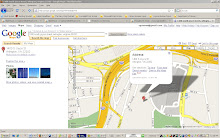













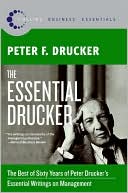































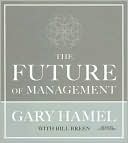



















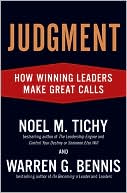




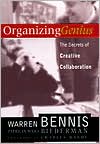









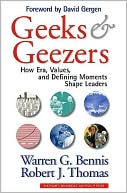







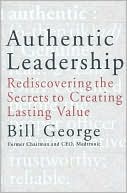








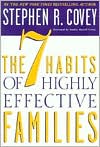

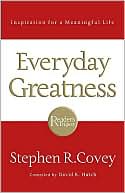







































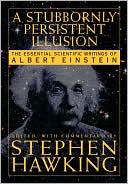
















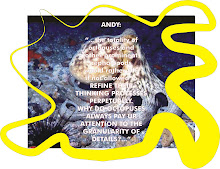
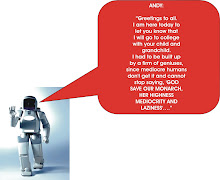
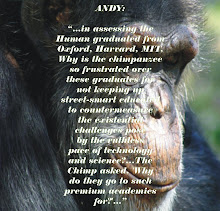


No comments:
Post a Comment